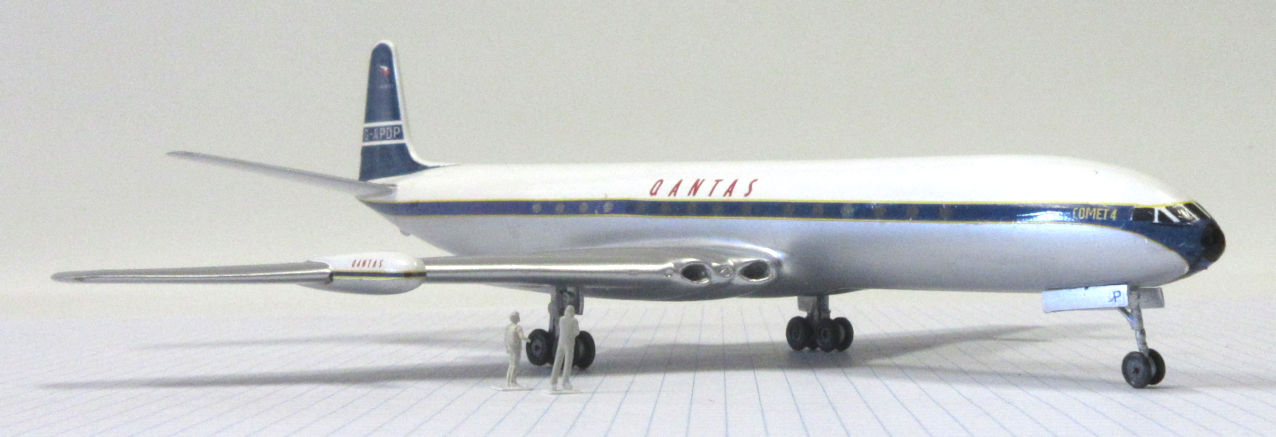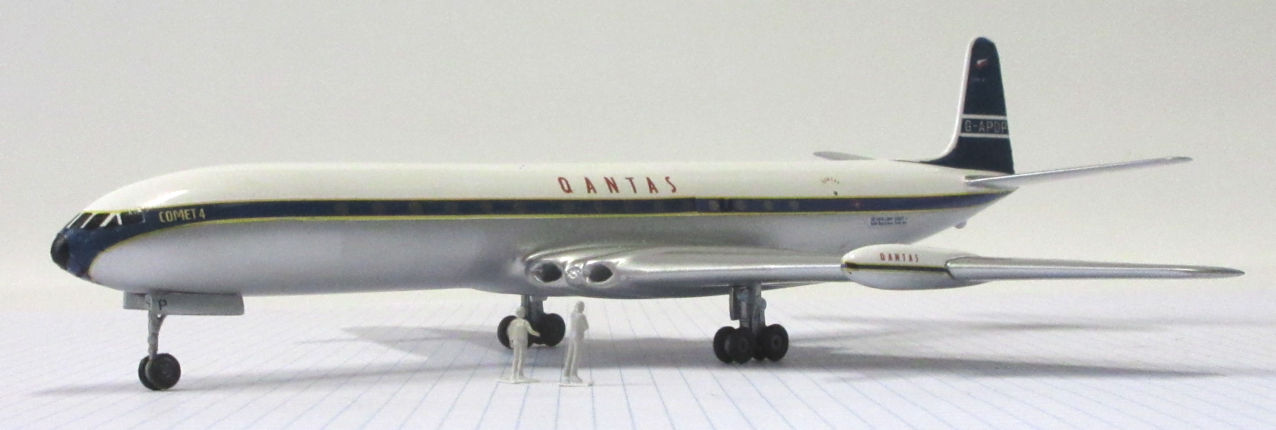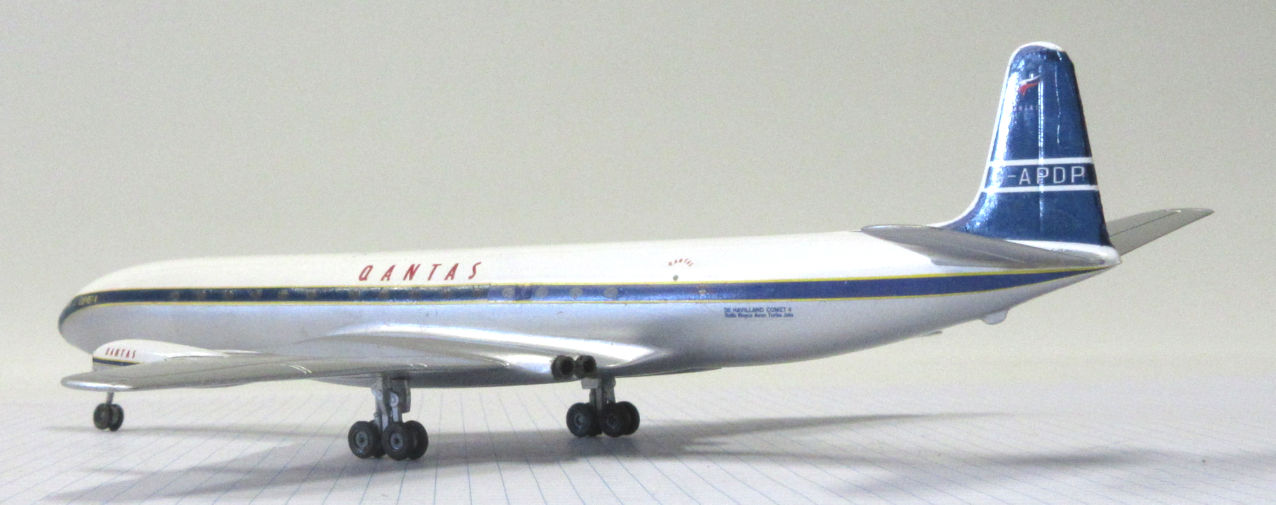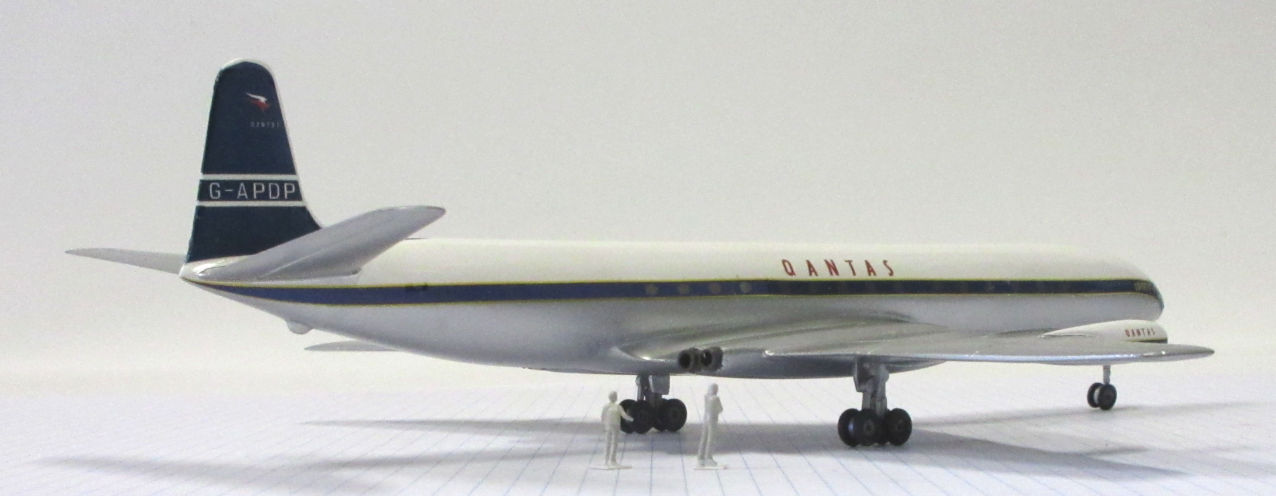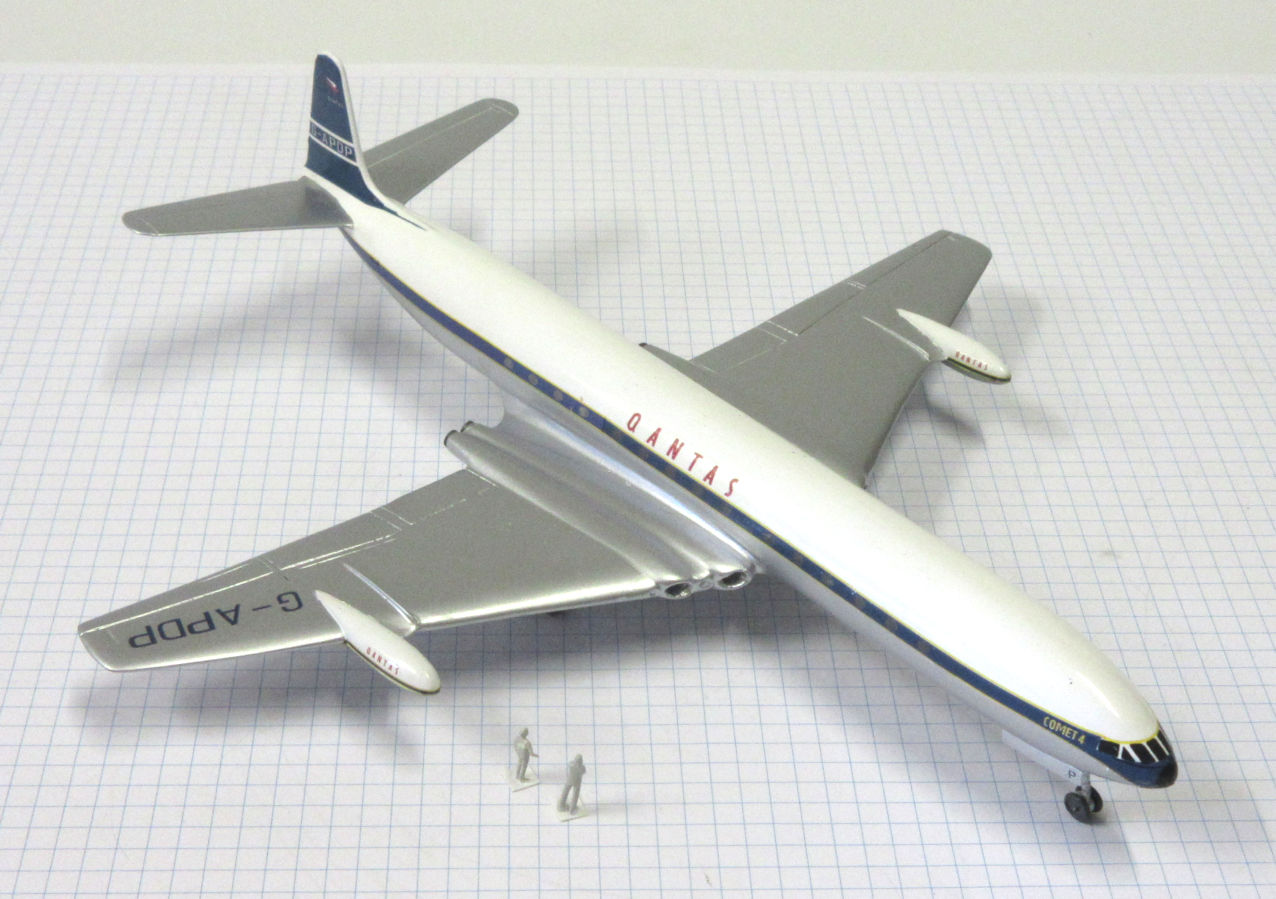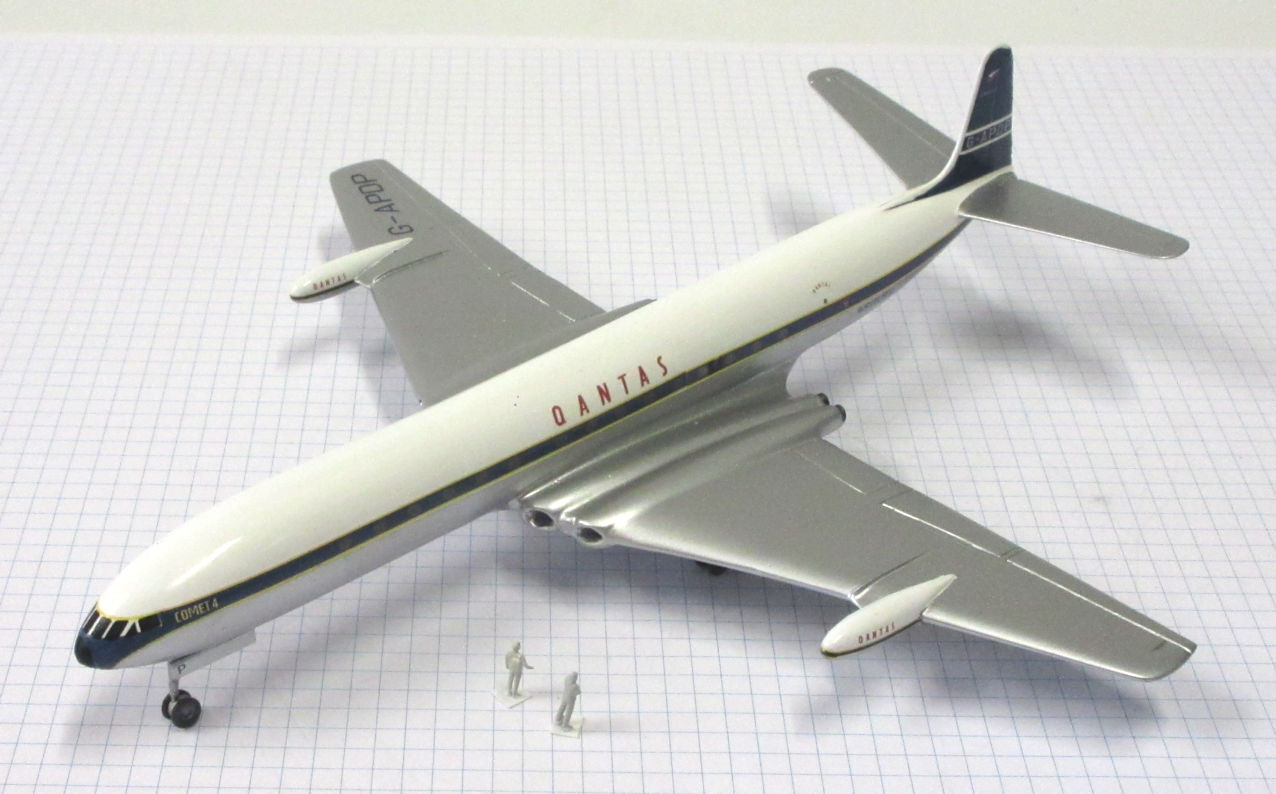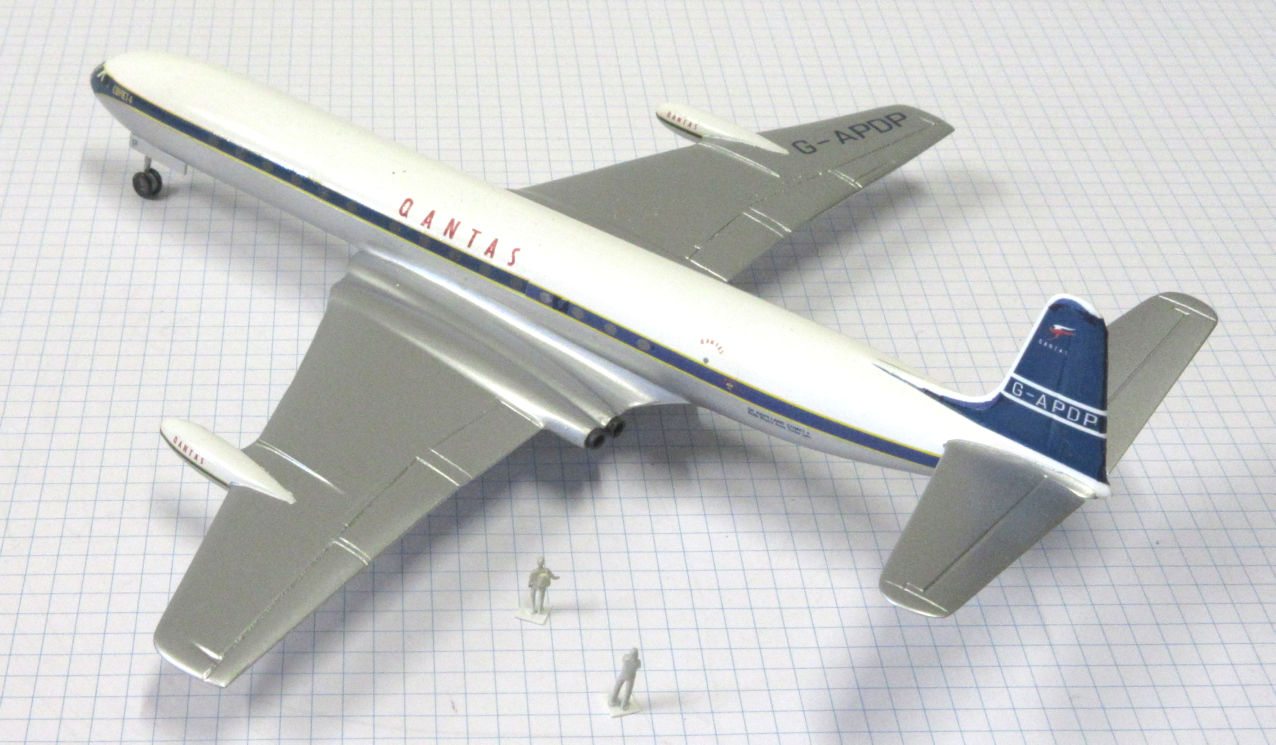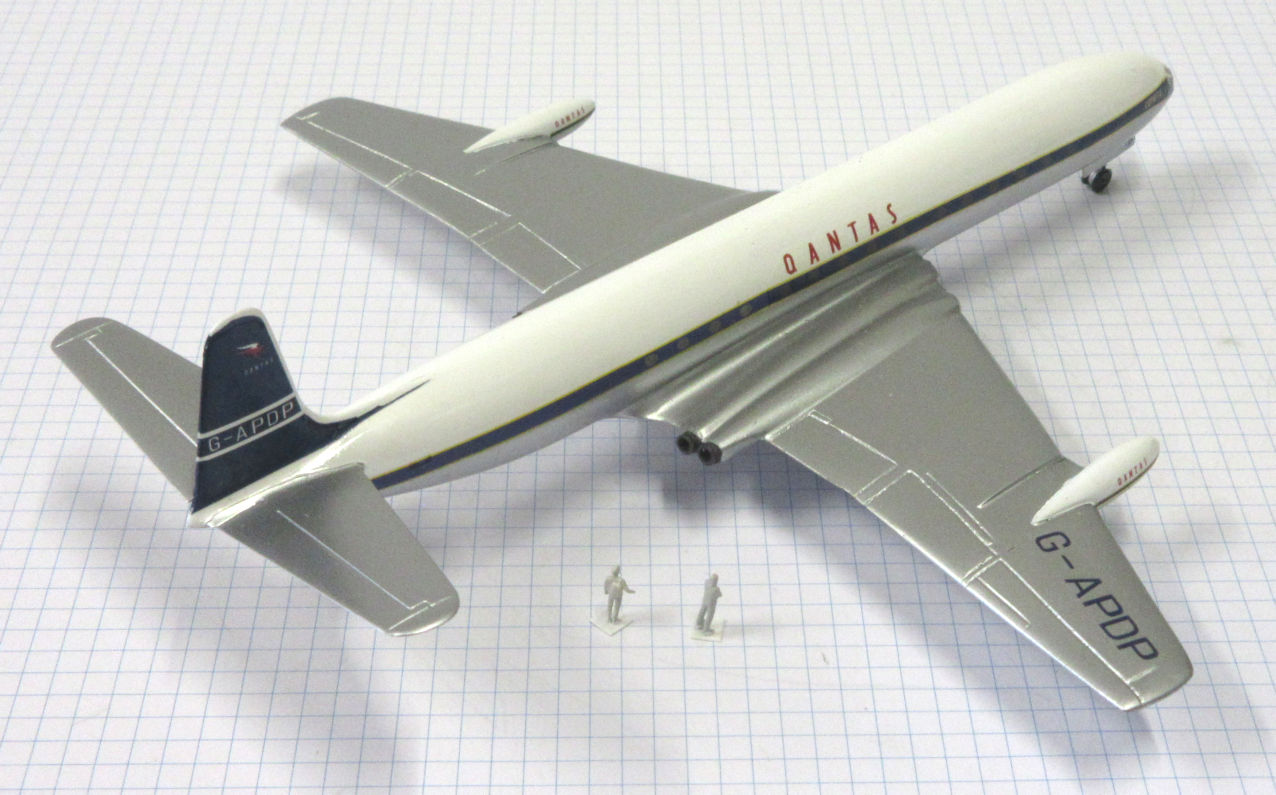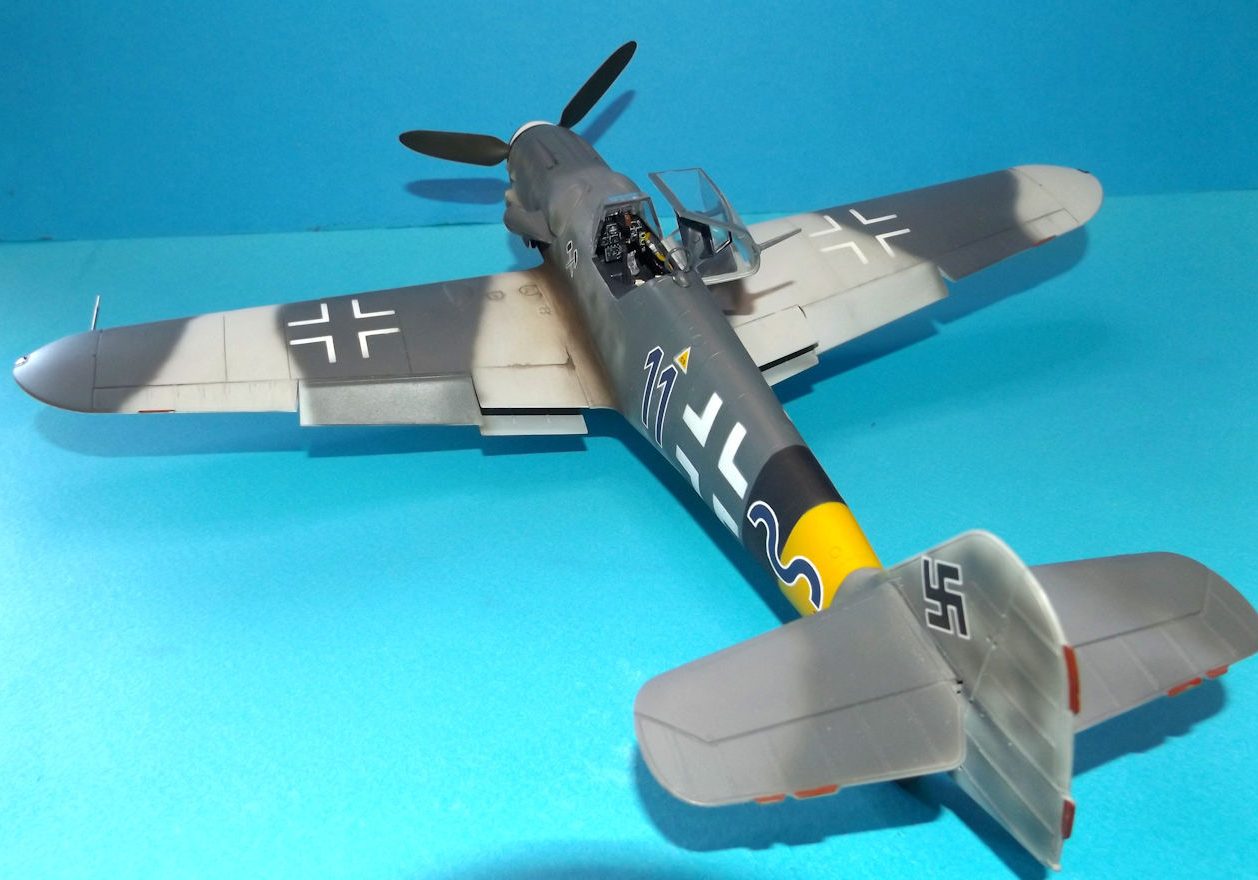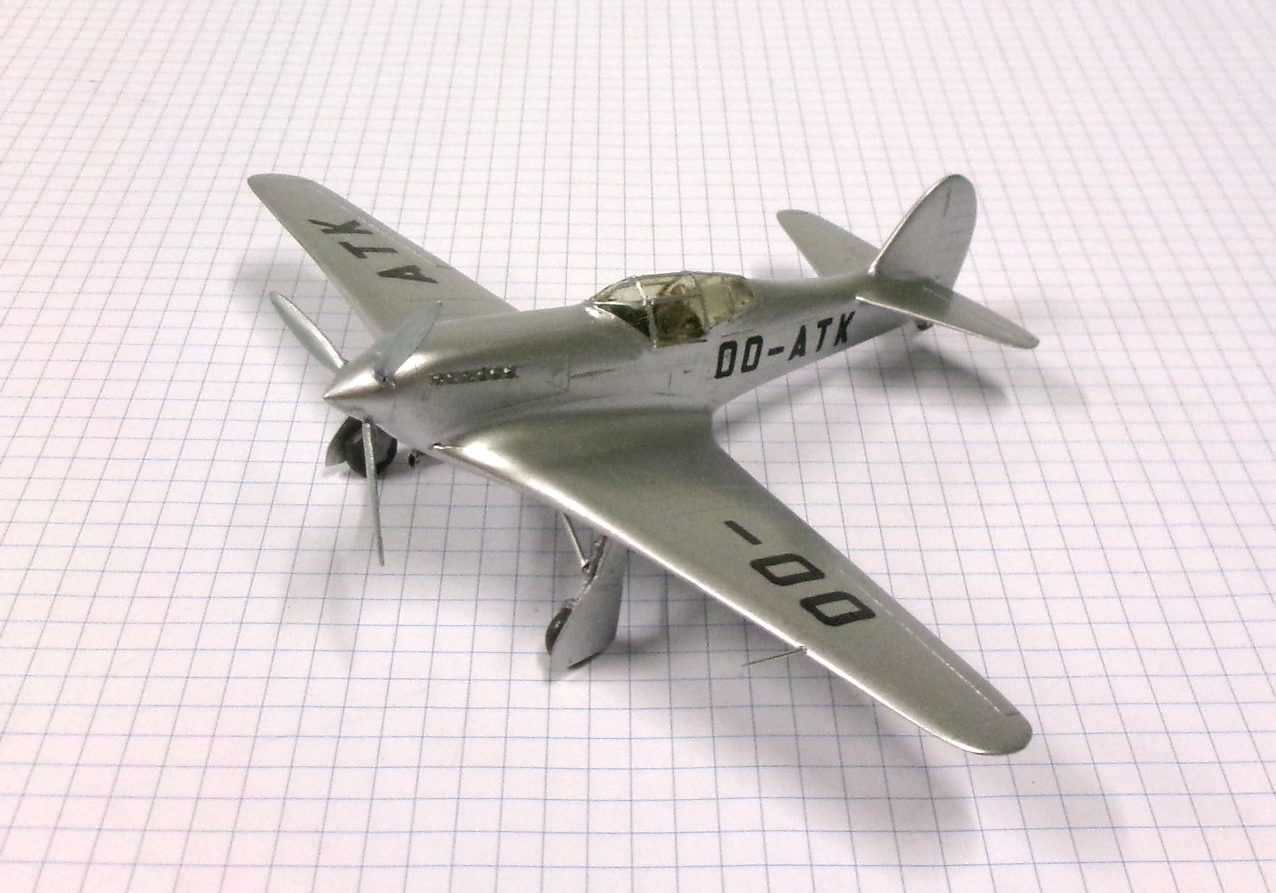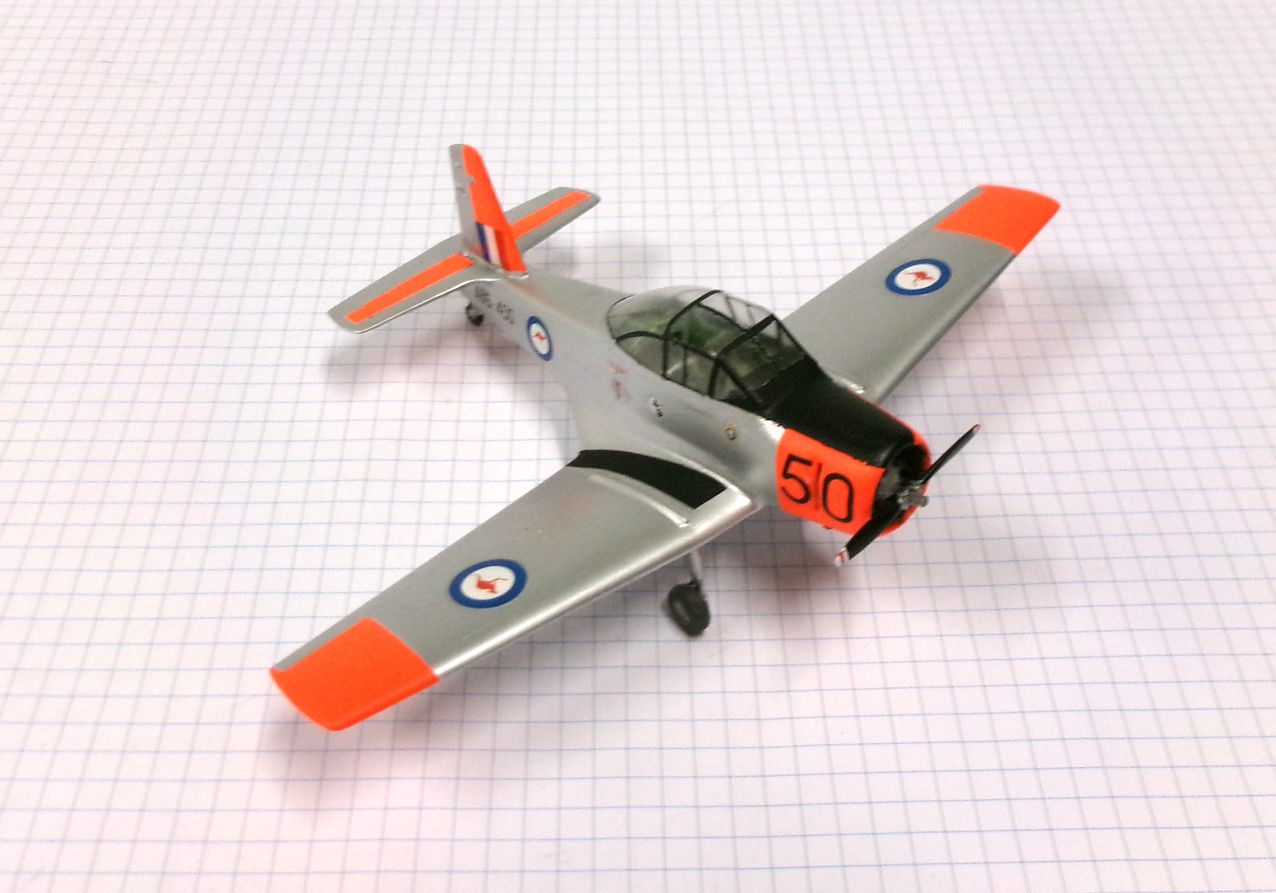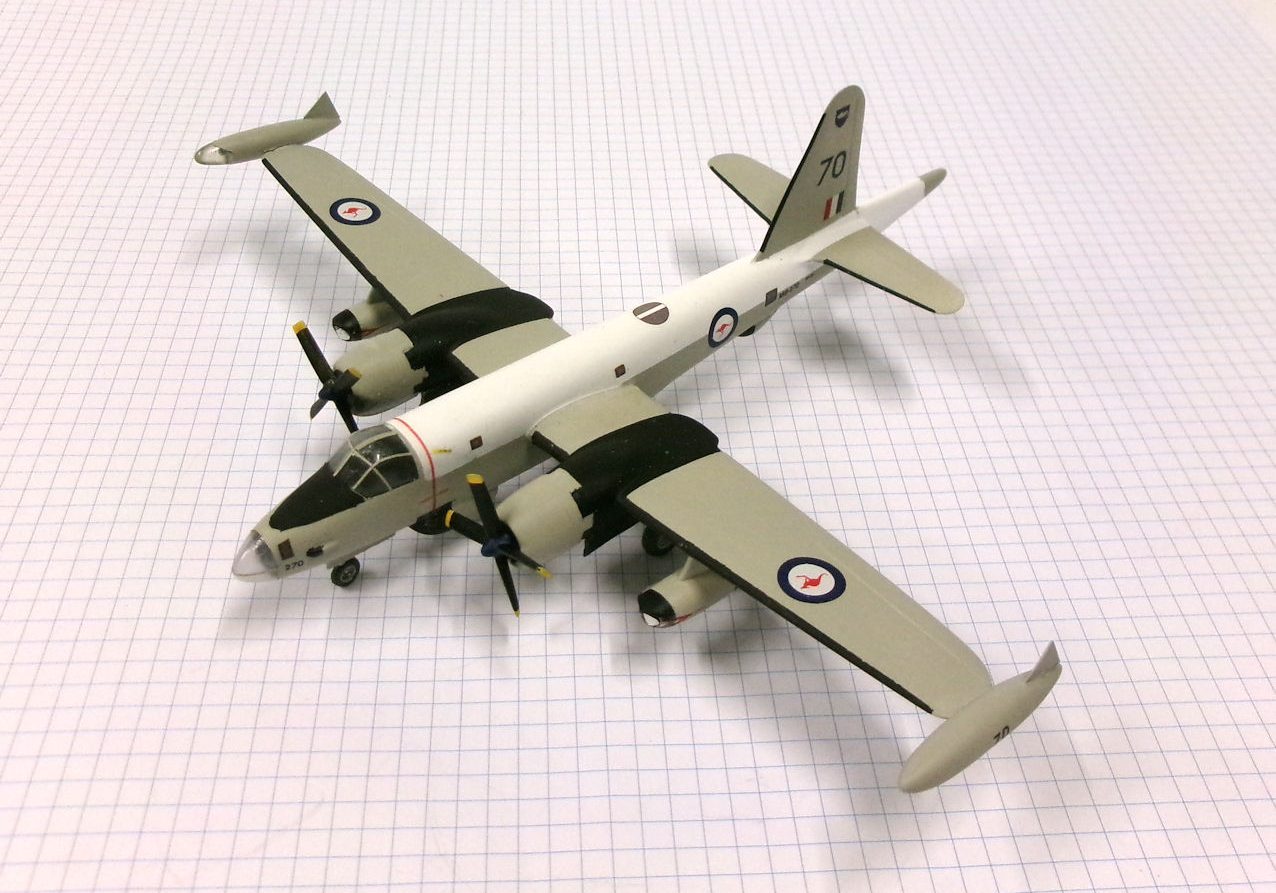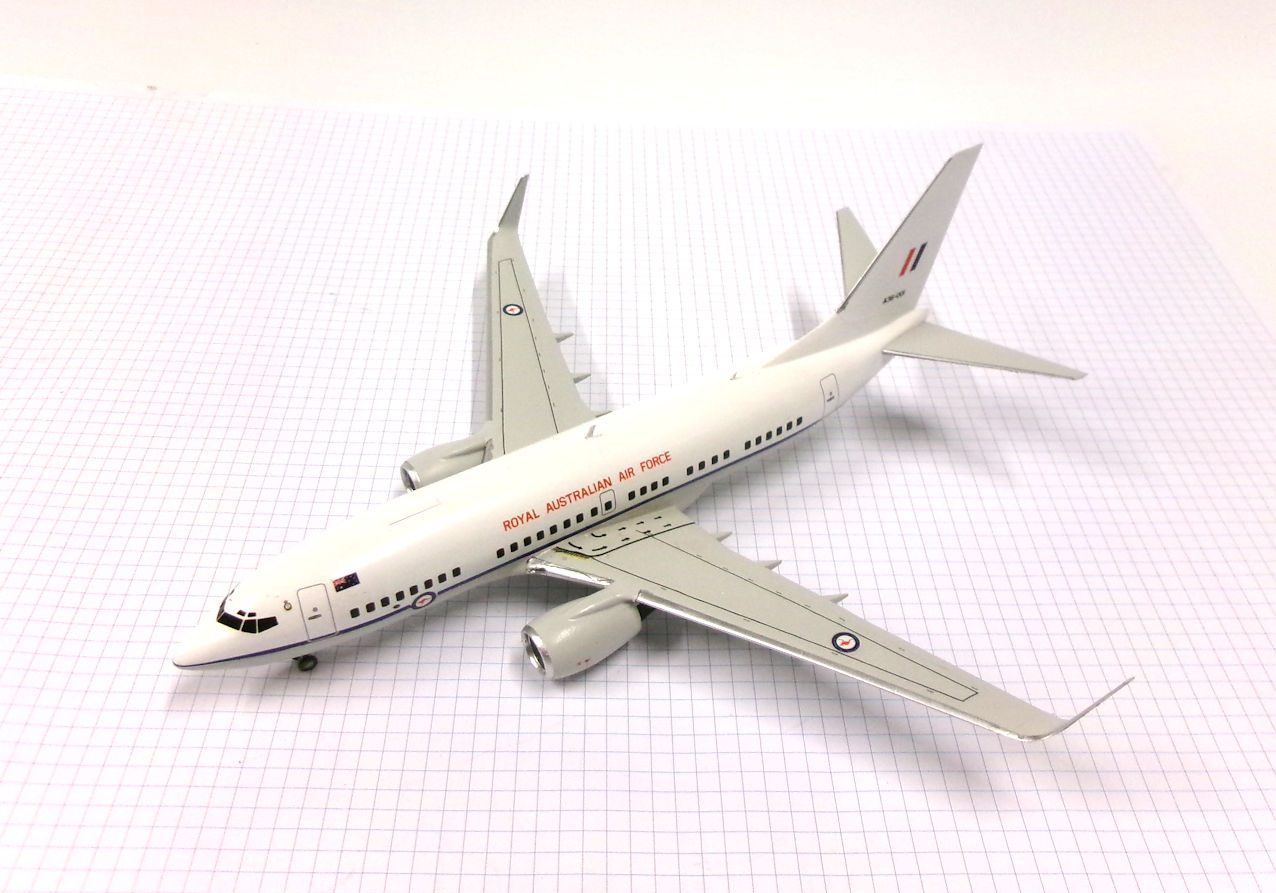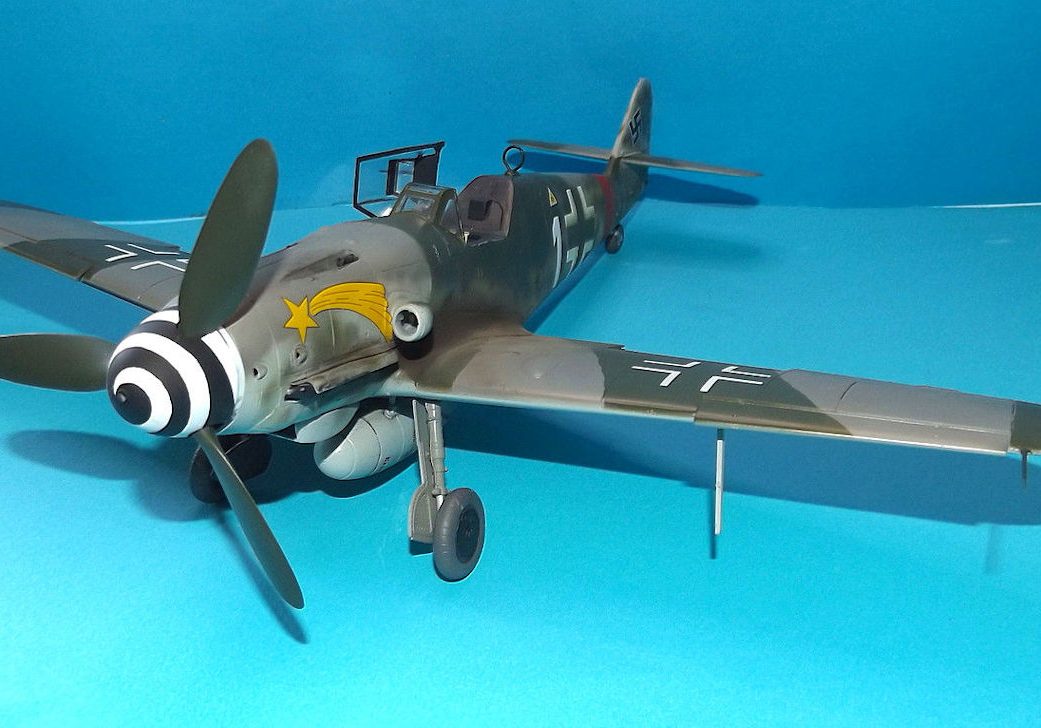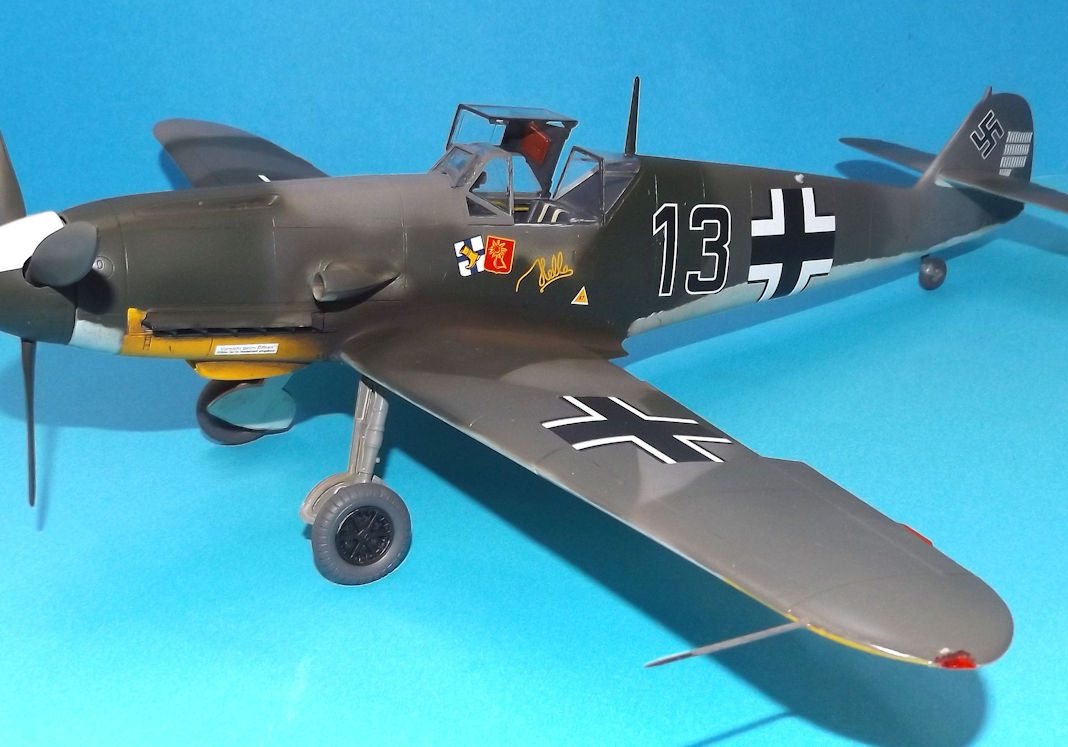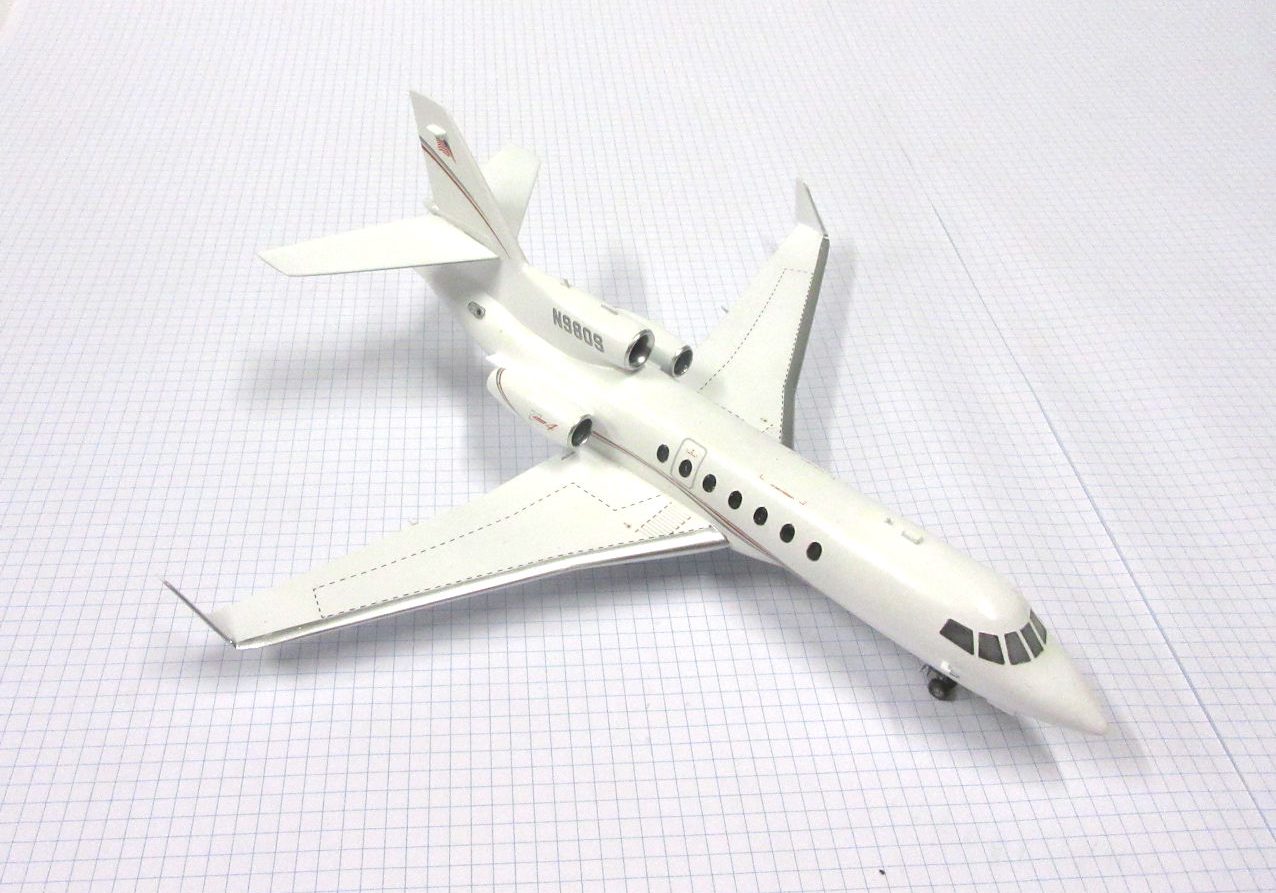History
The DeHavilland Comet was the world’s first jet airliner. After several catastrophic crashes it was grounded. The redesigned Comet 4 first flew in 1958 but, by then, it was overshadowed by new American jet airliners.
The Comet 1 entered service in May 1952 but lack of experience with pressurised airliners meant there was a critical weakness in the design which led to several fatal crashes in 1953 and 1954 and the Comet 1’s grounding.
The redesigned Comet entered production as the Comet 4 which first flew on 27 April 1958 and began entering service in September that year.
They were the first jets to fly on the trans-Atlantic route in 1958 but were soon surpassed by Boeing 707s and Douglas DC-8s.
Between 1959 and 1963 Qantas wet-leased six deHavilland Comet 4s at various times to supplement existing aircraft on the Kangaroo Route between London and
Singapore.
This model represents G-APDP in service for Qantas in the early 1960s
Airfix 1/144 kit with Hawkeye decals completed by Leigh Edmonds in December 2022.
